Tag Archives: ACCLA India
Decoding Michelin Stars
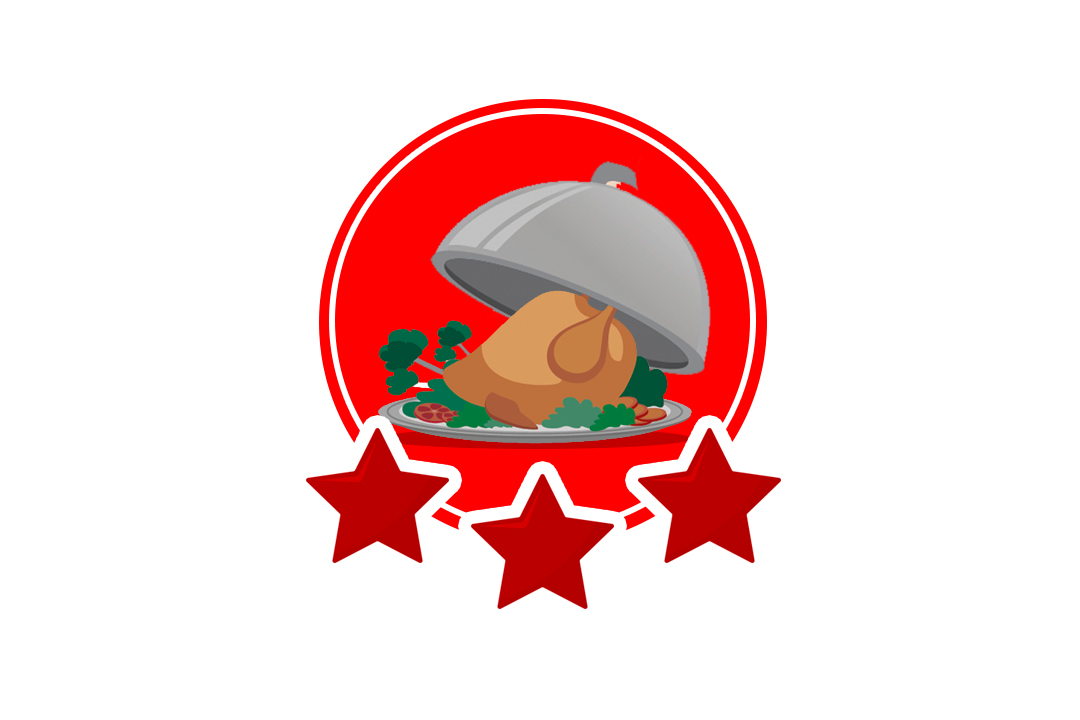
The Michelin Guides are considered the Academy Awards of the culinary world. Each year, Michelin publishes its Red Guide and Green Guides, that list the best eating establishments around the world. Restaurants receive between one and three Michelin stars based on anonymous reviews from ‘inspectors’, who can visit multiple times a year to ensure an accurate rating. The stars are difficult to obtain, and therefore an absolute honour for restaurant owners and chefs. They offer great prestige, exposure and an increase in business, and the opposite when they lose stars.
The history of the Michelin Guide and its stars is interesting. The most coveted restaurant reviews in the world were introduced by the eponymous Paris-based tyre company as a way to drive business. In the 1900s, when there were fewer than 3000 cars in France, Michelin published a travel guide to Europe to encourage people to drive to local attractions, which included restaurants and places of interest, as well as information for motorists such as mechanics listings, petrol stations, tyre repair and replacement instructions, and the like.
The restaurant review section became increasingly popular and a team was recruited to anonymously visit restaurants. In 1926, it started awarding a single star, which increased to the now well-recognised hierarchy of three stars.
The original 1936 rating explanations suggested that a single star indicates ‘a very good restaurant in its category’. Two stars indicate ‘excellent cooking, worth a detour’, while three stars meant the restaurant served ‘exceptional cuisine’ and was ‘worth a special journey’.
The ratings and reviews focus solely on the food, and in no way indicate anything other than that, including quality of service, interiors, table setting, etc. Any rating is considered praise, but with a one-star rating, Michelin inspectors typically mean that the restaurant offers quality menu and consistently good food, but largely lacks something singular that will command visits time and again.
With two-star ratings, restaurants can be rest assured that inspectors are suggesting they are worth a detour from a road trip to visit, offering something exceptional and unique. With three stars, the guide indicates that the restaurant is the destination itself and is worth a trip solely to visit, with dishes that are distinct and executed perfectly.
Michelin guides currently cover only specific areas – 25 countries, with the first Asia guide recognising Japanese cuisine only in 2007. India is not covered by the guides, but there are Indian chefs who have earned Michelin stars at their restaurants in other countries. These include Vineet Bhatia for his restaurant Zaika in London (2001), Alfred Prasad for Tamarind of Mayfair in London (2002), Atul Kocchar for Tamarind (2001) and Benares (2007) both in London, Karunesh Khanna for Amaya in London (2006), Sriram Aylur for Quilon in London (2008), Vikas Khanna for Junoon in New York for three consecutive years (2012) and Manjunath Mural for The Song of India in Singapore (2016). Gaggan Anand was the first Indian to win two Michelin stars with his eponymous restaurant in Thailand in 2018, the year Garima Arora became the first Indian woman to receive a Michelin star for Gaa in Thailand.
Of these, Atul Kocchar has teamed up with P & O Cruises for his restaurant Sindhu where he serves scrumptious Indian food on board, and also went to Antarctica in 2017 on a private charter cruise organised by luxury travel company The Q Experiences.
It’s important to note that Michelin stars are not only awarded to swanky, posh restaurants. Sushi Saito is a three-starred restaurant in Tokyo considered the holy grail of sushi but features a small wooden counter in a multi-storey car park.
Cruise Ship Chefs Experimenting The Right Way
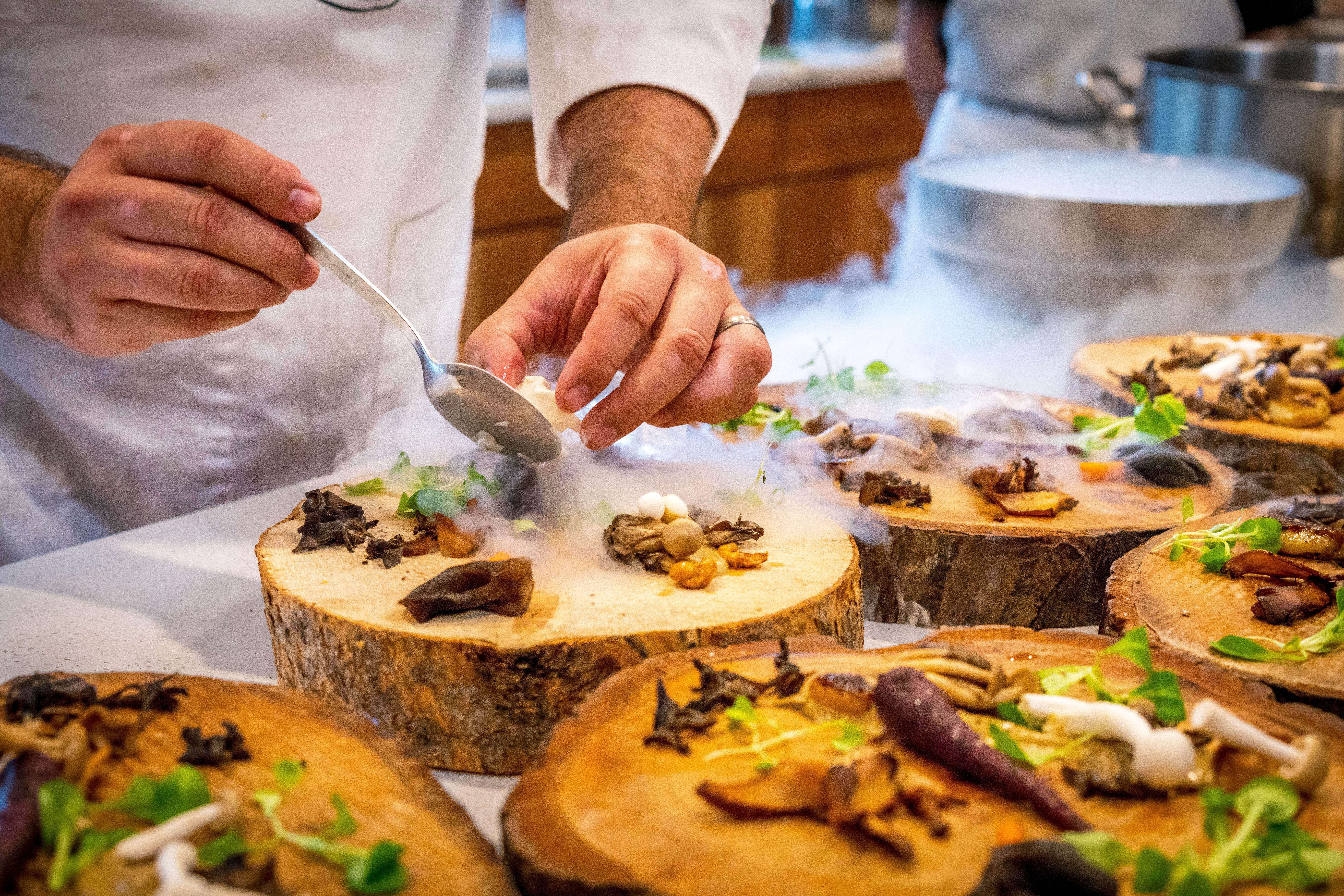
Experiments are the root of change, of new trends that could possibly become classics. Cruise ship chefs should look at experimenting as ways to understand the ingredients they work with, and how they interact with each other.
But it’s not just a matter of putting two random ingredients on a plate and keeping your fingers crossed. Experimenting correctly involves a lot of research and trials. Here are a few ideas to help you get started
Flavour base ingredients
Often, it is a subtle change that can enhance a flavour. Think of the classic salt with chocolate to bring out the sweetness, or a dash of cinnamon in a cake. Cruise ship chefs can make similar subtle changes to dishes on board – flavouring breads, butter and yogurt with various herbs to introduce new flavour elements into a dish. Garlic butter, for example, is so 20th century. We’re looking at butter flavoured with walnut and blue cheese, Thai curry, salty anchovy, and even chocolate and orange ganache.
Think like a child
Children see wonder in everyday things. They look at the most mundane things with a new perspective. To make food interesting, it can help to think like a child. Make your food colourful and look at creative ways of presenting it. Edible ‘dirt’ is already quite popular. Combine this with edible ‘glass’ made of sugar syrup, peanut butter ‘play dough’ and non-toxic glowing ‘slime’ to create themes of gardens and fantasy worlds. This works well for cruise ship chefs around festivals such as carnivals, Thanksgiving, Halloween and independence or national day celebrations.
Make your food more visual
Experiments with food do not have to involve just taste. Life is more visual now – social media has taken over and images are everything. Illusions can come in handy when presenting food. Think of edible containers or cutlery – bread bowls for dips and soups, flavoured dough fashioned into spoons and forks. Mellower Cafe in Singapore serves a cotton candy coffee that offers guests an unusual way of drinking coffee with a cotton candy ‘cloud’ that melts into your cup using the heat from the coffee.
The New Yorker magazine even discussed how visuals can change the way food is tasted. A study showed how participants rated a strawberry-flavoured mousse 10 per cent sweeter when it was served in a white container over a black, and coffee tasted almost twice as strong but two-thirds as sweet when served in a white mug instead of a clear glass one.
Combine tastes and textures
Cruise ship chefs can experiment with different cuisines that have similar components. Perhaps Mexican and Indian, or north African and European food. There may be interesting matches to be made in flavour fusions here. But chefs can also take a classic dish and switch up textures to be innovative. Perhaps rice crackers with a chutney that reminds you of curry – the flavours are familiar to the Goan palate, but the textures surprise. Deconstructed pies can also be served innovatively. Use local flavours to switch things up – ube or purple yam from the Philippines, Durian in Indonesia, dragon fruit in Mexico, feijoa in Brazil, salsify from Europe, oca from New Zealand, etc. This will help you experiment with interesting flavour combinations and also use ingredients grown in the ports you visit.
BREAD OF CRUISE LIFE
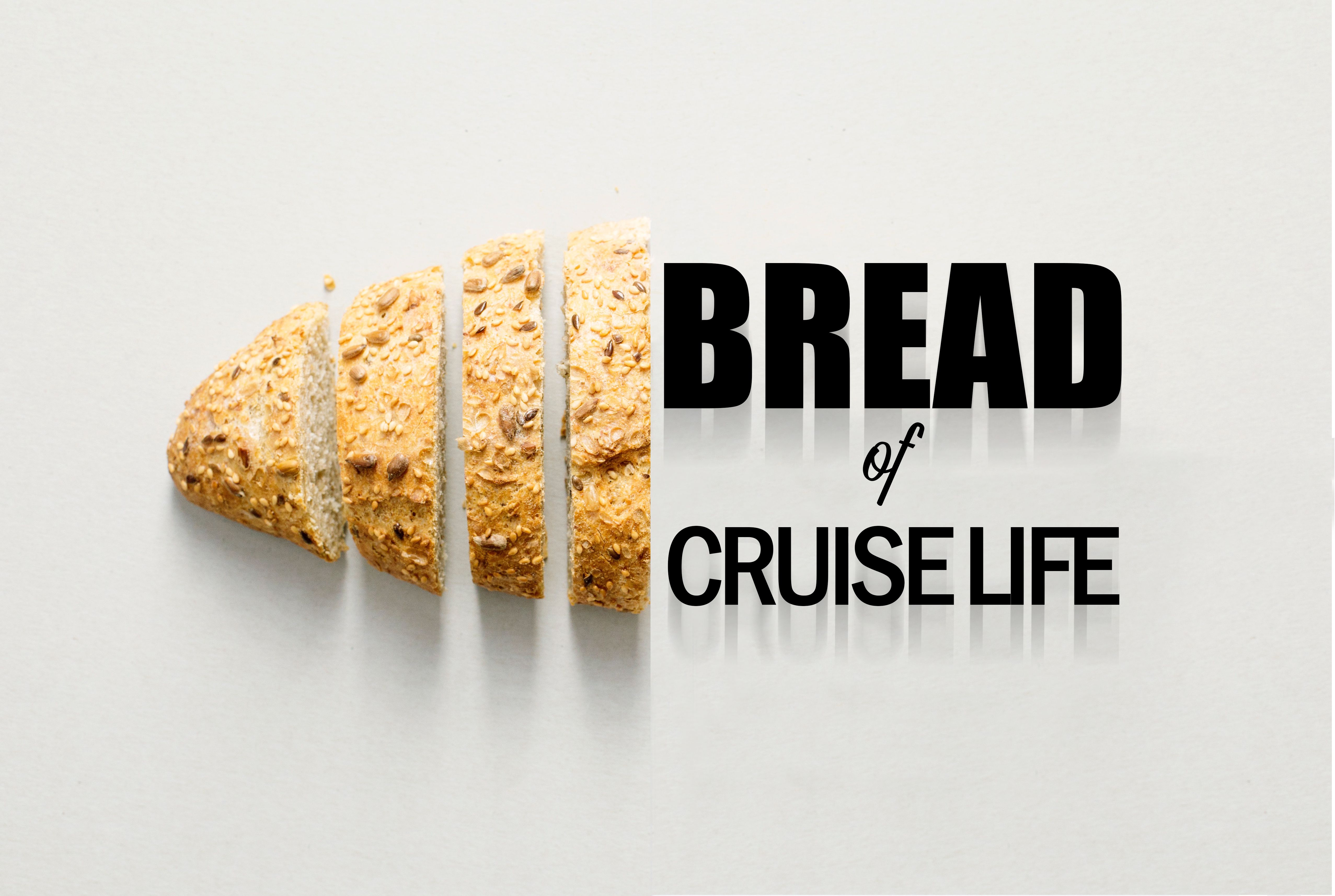 Bread is a staple in many diets around the world, featuring at most meals in European and North American mainstream food habits. For cruise ship chefs, this is a skill they must certainly master, particularly if they’re looking for cruise ship bakers jobs.
Bread is a staple in many diets around the world, featuring at most meals in European and North American mainstream food habits. For cruise ship chefs, this is a skill they must certainly master, particularly if they’re looking for cruise ship bakers jobs.
Americans eat on average 25 kgs of bread a year while the French reportedly go through 58 kgs annually. So one can imagine, that on cruise ships it is a pretty big deal. But there are a myriad types of bread from around the world, and bread displays on cruise ships are an important part of the buffet. Let’s look at a few popular types of bread available on most cruise liners.
Breadsticks
This pencil-thin crispy bread is often served as patrons seat themselves at the table, offering them something to snack on while they wait for service or enjoy some wine. Sometimes they are accompanied by cheese or dips, and wider versions may come with as an hors d’oeuvre with items like prosciutto.
Pretzels
Originally a German favourite, pretzels are now a popular snack noted for its looped shape and lovely crunch. They’re often eaten plainly salted but can also be topped with seeds, sugar, chocolate or cheese.
Sourdough
This variety of bread has recently undergone an artisanal revival, and involves a biological leavening process using a lactobacillus culture rather than yeast. It can be made from wheat, rye and barley, and because of its dry quality, is ideal for soaking up gravies, spread and also to make bread bowls for soups or bread crumbs.
Baguette
This French bread is crusty, long and slim. It very often forms an integral part of traditional Continental breakfasts, served with butter and fresh jam. However, you will also see it used with pâté or cheese, and sometimes for sandwiches such as paninis or submarines.
Focaccia
This versatile Italian bread can be seen as a doughier version of a pizza base. It can be served as an appetiser or as a side to a meal, but the most popular style in Italy is prepared with rosemary, olive oil and salt. Another favourite version is baked with olives.
Zopf
This Swiss loaf features prominently in bread displays by cruise ship chefs. It is also made in Austria and Bavaria, with white flour, milk, eggs, butter and yeast. The beautiful braid-like structure and gloss from the egg yolk brushed on top give it a very appetising look. A similar looking bread called challah is made around Jewish holidays.
Bagel
The bagel originated in Poland, a dense style with a browned exterior often topped with sesame seeds. It’s a very popular snack in North America and is mostly topped with cream cheese and cured salmon. Breakfast bagels are now becoming common, with sweet and fruity flavours.
Brioche
This is a cute little French variant that’s almost between a bread and a pastry. This makes it ideal for a hearty sandwich meal, simply adding some cheese or cured meats. It’s an easy meal for fussy children who will enjoy hazelnut chocolate spread or peanut butter and jelly in between.
Buns & rolls
These are the common types of bread needed as accompaniments to main meals. Cruise ship chefs also need to know how to make buns for burgers and rolls for hot dogs as these are popular snacks on board.
Sliced bread
There is no list of popular bread that is complete without the humble sliced loaf. It’s great for toast at breakfast and perfect for melty cheese sandwiches. Dry loaves go into making croutons for soup or bread pudding for dessert. They come in many variants including white bread, whole wheat, multi-grain and more.
Debunking Myths of Cruise Ship Chef Jobs

Life as a cruise ship chef is fairly different from one working in a land-based job. The work and living environment varies starkly and often potential recruits are subject to hearsay that can make them anxious about becoming cruise ship chefs. Here are a few myths of working on cruise ships:
You will have to prove yourself immediately
There’s nothing quite as jarring as having to perform to the best of your abilities on the first day of your first job. New cruise ship chefs don’t have to worry about this. Every company has a compulsory orientation and training programme to help you get acquainted with your work space, team mates and responsibilities. It is certainly a competitive world out there, but you will definitely get some breathing space before you are expected to perform.
Promotions are non-existent
Once more, this is based solely on the fact that there are many people vying for cruise ship chefs jobs. But you must also remember that the industry is expanding; it saw a six per cent increase in passengers from 2018 to 2019, and 18 new ships were ordered just from Cruise Lines International Association for the coming year, according to cruising.org.
This means that there will be improving employment prospects, and as with every industry, people with experience and good reputations are far more likely to be promoted both within the company and outside. Cruise ship chefs also stand to profit from promotions in land-based jobs when crossing over.
It’s a paid vacation
Many cruise companies, or even people currently with cruise ship chefs jobs, can paint an unrealistic picture of life at sea. It may seem like they are discovering a new exotic location every week, indulging in the best food, drink and activities, and generally having the time of their lives.
While cruise ship jobs are exciting, they are certainly not a walk in the park. The work days can be long and arduous, and there will be times you are required to be on ship even during your time off to adhere to rules on the minimum number of personnel on board. This is on a rota basis, so everyone gets a chance to relax. All in all, you will definitely enjoy time off in port while within the restrictions of your duties.
You will be home sick
Being far away from home for many months at a time can cause some people to be anxious, especially if it is their first time ever. You are probably imagining weeks upon weeks of no connection with home in a completely new environment.
While this may be partly true for a few rare individuals, cruise ship companies offer many ways to help ease any home sickness, if at all. Many Indians work on board cruise ships and you will find a range of food that reminds you of home. You will also find many employees speaking a language familiar to you. Major festivals such as Diwali and Holi are also celebrated with special food from the region, and parties specially for the crew.
Cruise ship companies also provide access to the internet so you can contact home and speak to your loved ones – it may be paid but the cost is often far less for crew than it is for guests.
Cruise Ship Chefs and the Secret to FIFO
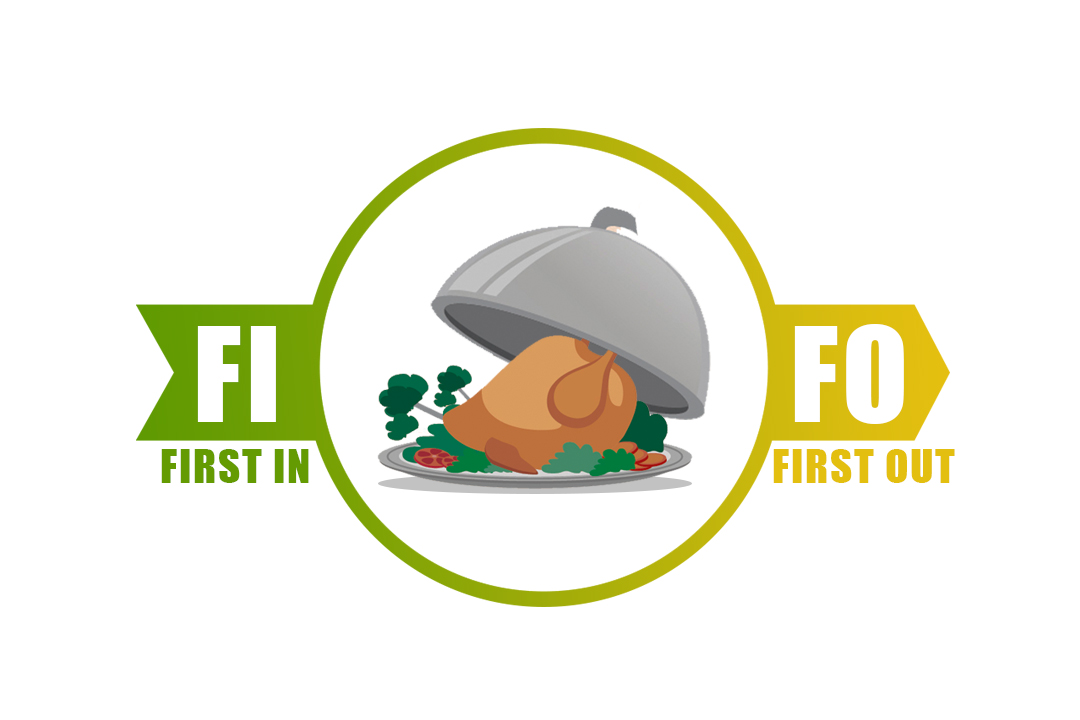 On a cruise ship pandering to the demands of thousands of guests each day, it can be hard to keep track of stores. But this is a vital part of the chain as proper food storage can reduce waste and costs while also keeping food-borne illnesses at bay.
On a cruise ship pandering to the demands of thousands of guests each day, it can be hard to keep track of stores. But this is a vital part of the chain as proper food storage can reduce waste and costs while also keeping food-borne illnesses at bay.
One of the ways to do this is to follow the FIFO system – First In First Out. This is a food rotation system that enables food with an earlier use by date to be consumed first. It can be used in other industries as well, but is one of the most efficient and safe ways to store food in commercial spaces such as restaurants, bakeries, cafés, diners, etc.
On board cruise ships, inventory managers and their teams keep a close eye on produce that makes it on board. They are in charge of noting depleting stocks and ordering produce to be delivered to the cruise ship at port.
When it arrives, it is checked for quality and then sent into storage. This is where the FIFO method becomes important. The inventory team checks the use by date on each item already in the store. Those that have expired are discarded. The ones with earlier use by dates are placed at the front of the shelf. The new ones with later use by dates are stored at the back of the shelf.
So when a line cook needs produce for prepping, he or she automatically reaches for the items at the front of the shelf. It is within easy reach and requires only a cursory check for the expiry date.
This makes it less likely that food will spoil and there will be fewer items that have expired. This minimises waste and ensures that you always serve fresh food.
For FIFO to work well, everyone in the hierarchy must follow it without fail. The products must first be checked for damage – puffy cans or tetra packs can indicate gas formation, a by product of harmful bacterial growth. Note why a particular product hasn’t been put out for use, if at all.
It’s also important to check the condition of the storage area. The temperature is typically maintained based on the product – frozen food at -18 degrees Celsius (0F) or less, refrigerated foods at 5 degrees Celsius (41F) or less and dry items between 10-21 degrees Celsius (50-70F). The space should be cleaned and sanitised, including the floors, walls, shelves, containers, carts and trays to reduce the spread of bacteria which can spoil produce.
FIFO is also applicable for food items without containers. Perhaps the cruise ship chef made a batch of ice cream, mayonnaise or salad dressing. If it is not used up in a single meal service, it should be stored in a clean container with proper labelling.
This label should contain the name of the dish and information of basic ingredients, including allergens such as dairy or nuts as well as the date and time it was made. Potato salad, for example, can keep in the fridge for about three days if stored correctly. House-made mayonnaise can last for about a week in the refrigerator.
This handy information allows cruise ship chefs and line cooks to use up leftovers appropriately to avoid food waste while keeping in line with safety regulations.
Common Culinary Terms Cruise Ship Chefs Should Know
 The organised chaos that defines cruise ship chefs jobs can throw any newbie off. Directions are shouted, information cross-checked and everyone runs around attempting to reduce the time between order and service.
The organised chaos that defines cruise ship chefs jobs can throw any newbie off. Directions are shouted, information cross-checked and everyone runs around attempting to reduce the time between order and service.
In the midst of all this, being unfamiliar with common culinary terms can slow cruise ship chefs down. It helps to get acquainted with words that you may hear in the galley. Here are just a few:
Al dente
Pasta is an all-time cruise favourite on cruise ships and preparing it right is essential. Typically, recipes require pasta to be cooked al dente, which literally means ‘to the tooth’. It means the pasta should have a soft bite; it should not be soft and mushy. Cooking pasta al dente involves using the right pot, the right amount of water and salt, and draining the pasta on time.
Baste
Basting is an excellent way of showcasing the depth of flavour of any type of meat. It is used primarily in cooking styles where meat is exposed to heat over long periods of time. Basting involves periodically coating the meat with either its own juices, a sauce or marinade as it cooks.
Dash, Dice, Julienne, Pinch, Smidgen
Recipes often call for quantities that don’t appear specific. For amateur cooks, estimating has few negative consequences. But for professionals such as cruise ship chefs, the high standards require hundreds of dishes and dozens of plated meals to look and taste exactly the same.
When the recipe calls for a dash, add 1/8th of a teaspoon. Dicing involves cutting the pieces to a size of 1/4th or 1/8th of an inch. When asked to julienne vegetables, they are expected to be approximately 1/4th of an inch thick and an inch long. A pinch is 1/16th of a teaspoon, while a smidgen is 1/32 teaspoon.
Bouquet garni
Cruise ship chefs make stocks and soups from scratch. For these, a bouquet garni is essential. Typically, it’s a bundle of herbs tied with string or stuffed into a small sachet made of cheesecloth, then cooked with other ingredients and removed before the dish is consumed.
Frenching
Aesthetics play a big role in cruise ship dishes. Frenching is usually done to lamb, pork, beef and chicken to make it both easier to eat and also make the dish look clean. To do this, chefs move the meat and fat away from the bone which can then be held when eating the meat. This technique is used for chops, chicken breast or leg, and tomahawk steaks.
Quenelle
This term became increasingly popular with the public with the success of Masterchef Australia. It’s a technique by which a spoon – or two – is used to give a presentable oval shape to soft foods such as creamed meat or ice cream. For meats, the quenelle is usually coated with breadcrumbs and egg before being poached to help hold its shape.
Xylitol
Along with stevia, agave nectar and coconut sugar, xylitol is fast becoming popular as a plant-based sugar substitute. Some of these, such as xylitol, are regarded as a safe alternative for diabetics and are well-liked by the health-conscious. With an increasing number of guests with food restrictions travelling on cruise ships, chefs must stay up to date with changing trends.
Culinary Nightmares For Cruise Ship Chefs
Cruise ship chefs jobs can be tough. Cooking for thousands of people three times a day is no mean feat and can be a nightmare. Cruise lines have standard operating procedures to follow for smooth running of the system. But there are always a few fears that cruise ship chefs hope never materialise.
UNTIDY STAFF
This doesn’t seem like much but if you have juniors working under you who do not clean up after themselves, it can be very frustrating. Having a poorly managed work-space can throw cruise ship chefs off their game, and no one wants to get started on a bad note when there are hundreds of hungry mouths to feed.
MALFUNCTIONING EQUIPMENT
One of the worst nightmares for cruise ship chefs is dealing with equipment giving out. A simple thing as having the stand mixer stop in the middle of kneading can add many more minutes to your already long day. Imagine not realising that the ice cream churner gave up 5 minutes after you left it to do its job. It means having to start from scratch all over again.
Malfunctioning equipment can also stretch to huge ovens and electric chafing dish warmers. There are engineers on board to help fix these issues but it might not be immediate.
BAD WEATHER
Sudden nasty climatic conditions can ruin anyone’s trip. With global warming and climate change very real now, cruise ships sometimes have no choice but to weather a sudden storm. Most guests on board are not used to a tossing ship and can get seasick easily.
This means that cruise ship chefs must work accordingly. First, their estimates of meal types and numbers go askew as some people do not eat at all when feeling sick, while others like to have a good wholesome meal. Secondly, they might need to make food that’s easy on the stomach – like soups, brews and stews, which do not hold very well in their serving dishes on a ship trying to ride very large waves.
SERIOUS FOOD ALLERGIES
Guests can be rather careless at times. Most are required to let cruise companies know of any dietary restrictions so cruise ship chefs can cook food accordingly. However, in the rare case that a guest has left out allergen information or is unaware of it, it can be a bit problematic for cruise ship chefs.
It may not be their fault at all, but no chef wants the trauma of someone else’s severe allergic reactions connected with them at all.
DELAYED VENDORS
One of the biggest attractions on cruise ships is its food. To maintain high standards, ingredients need to meet the mark on quality and freshness. Cruise ships can only access fresh produce in port, so if a vendor is delayed, cruise ship chefs can be in a fix.
Typically it is then the onus of the vendor to ensure that the shipment reaches the next port on time, but this still presents a problem to cruise ship chefs who must now make do until that time.
FOOD POISONING
The last thing cruise ship chefs want on board is for guests to have a case of food poisoning. It might not even be the cruise line’s fault. Perhaps the guests ate something dodgy in port and fell sick after the ship set sail. If a significant number of guests fall sick, it could be bad business for the company. There will be inspections and analyses of how the issue occurred. There might even be new procedures put in place if a few – maybe even unrelated – lapses are noticed.
Why Adulterated Food is Bad News For Cruise Ships
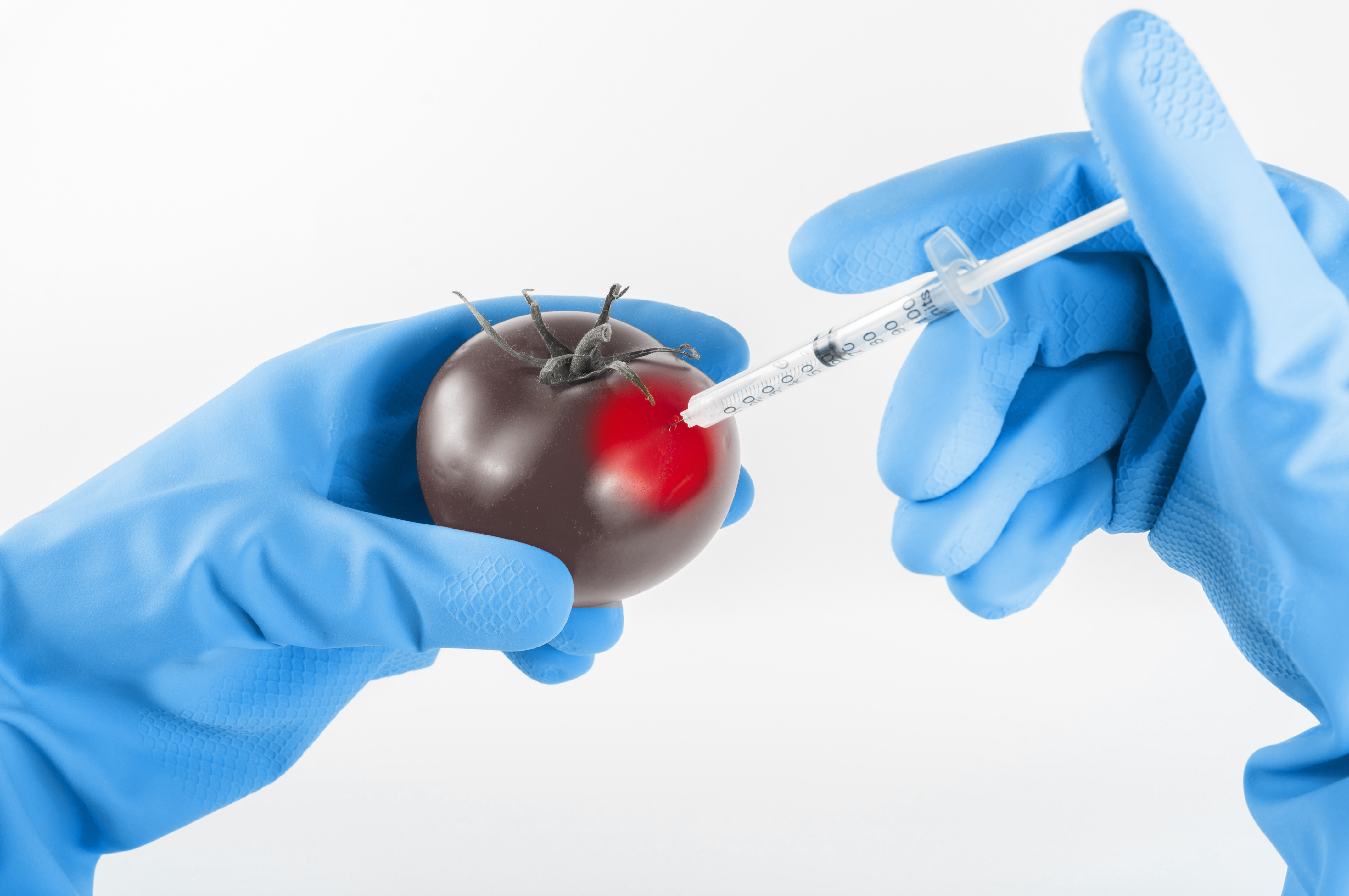 Food adulteration involves the addition of chemicals to food which degrades its quality. It is typically carried out to make food seem more fresh, enhance flavour or increase the quantity of food production at a cheaper rate.
Food adulteration involves the addition of chemicals to food which degrades its quality. It is typically carried out to make food seem more fresh, enhance flavour or increase the quantity of food production at a cheaper rate.
According to the Federal Food, Drug and Cosmetic Act – followed by most cruise ship chefs – adulterated food includes any edible substance that has additives that are injurious to health, has additives that have not yet been deemed safe for consumption, has been packed or stored in unsanitary conditions and has had a valuable ingredient omitted or replaced (completely or partly).
On board, cruise ships chefs jobs require in-depth knowledge of food safety and skills to identify adulterated products. If found, they are kept aside for inspection and a report submitted to higher ups. This keeps the fraudulent adulteration industry in check and helps the cruise ship maintain its quality status.
Adulterants can cause immediate health effects such as diarrhea, nausea and poisoning, but can also have long-term effects (especially if ingested over a prolonged period of time) such as glaucoma, lung and heart disorders.
Bacterial adulterants such as salmonella and bacillus cercus can cause severe abdominal issues. These kinds of adulterants are most easily spread on cruise ships and must be avoided at all costs.
A majority of cruise ships make stops in US ports and therefore, come under US food safety laws. Non-compliance can cause hefty fines, sickness and repercussions for the whole company.
In 2017, the Center for Disease Control Prevention noted 17 instances in which cruise ships failed inspections, according to a MarketWatch analysis. These included a range of issues including minor ones where a mop was stored incorrectly to major ones where crew continued to work despite displaying symptoms of gastrointestinal illnesses.
In situations where cruise ships fail inspections, the vessels are required to submit a Corrective Action Report indicating exactly how they plan to rectify the issue. They must also pay a fee for re-inspection. This fee can go up to almost US$18,000 for the latest large-scale commercial liners.
Vessels that continue to fail on major issues where the health of passengers and crew is at stake maybe given a ‘no sail’ recommendation. During this time, they are expected to stop plying while issues are being fixed. If they continue to sail without fixing the issue, the recommendation turns into an order.
But all food establishments, not just cruise ships, can suffer other consequences of food adulteration if a guest gets affected. If they have enough evidence, guests can sue the company. If many are affected, they could take to social media and the internet to vent their feelings.
Many establishments have felt the backlash of poor reviews online. A study by Checkit in the UK in 2016 suggested that as much as 61 per cent of people would not eat at a restaurant that received poor food hygiene ratings.
The implications can also reach employees who might not take too keenly to working in an unsanitary environment or who might have a grudge against the company and make mention of it on social media.
There are many ways in which adulteration of food can harm the cruise ship industry, so vessels take great precaution to avoid safety hazards as far as possible.
How Cruise Ship Chefs keep Meals fresh on Board
 Passengers rarely wonder how the high quality scrumptious meals each day make it to the table while far out at sea. Cruise ship chefs jobs require specific training and knowledge on how to maintain freshness during each trip.
Passengers rarely wonder how the high quality scrumptious meals each day make it to the table while far out at sea. Cruise ship chefs jobs require specific training and knowledge on how to maintain freshness during each trip.
It all begins with the provisions team, who make notes on how much of each item will be required for an upcoming trip and place the orders well in advance. Provisions are typically ordered with a couple of days to spare, in case of emergencies or bad weather not permitting the ship to get to port.
The provisions team also bases its orders on the expected demographic of guests. Europeans, for example, prefer lighter wines such as Riesling and Pinot Noir; Australians like heavy breakfasts; Europeans like craft beers; and Asian passengers will, overall, have a different palate for food compared to Westerners.
Vendors ensure that stocks reach port in time for loading, and as soon as the ship is berthed, crew get round to checking each shipment. If they find any that are not up to standard, the shipment is returned and replaced before the ship leaves port. With fresh produce, vendors pack them in various stages of ripeness so they last a longer while. All items are also transferred from wooden pallets to metal trays as the latter are more easily cleaned and less likely to carry contamination from the wood onto the ship.
Once on board, the crew stores them in specially designed refrigerators, each holding a separate item. Bananas are stored separately as they give off chemicals that can easily spoil other fruit. The temperature and humidity levels in each refrigerator are set specifically for the item it holds, to ensure it remains at optimum freshness.
Fish is often very fresh when it comes on board, and cruise ship chefs will determine how much is required for the first four to five days and put that amount on ice. The rest is immediately frozen. Shellfish is typically already frozen on arrival. If the number of days between ports is fewer, the ship will pick up fresh fish and produce more often, instead of relying on frozen goods.
Salads and raw food are pretty popular on menus during initial sailing days, and taper out towards the end. The menus are also fairly simple – perhaps just one main version of meat, seafood and poultry, so that cruise ship chefs can hold dishes at a food-safe temperature and prepare food to order.
At every point, the provisions team ensures that food is used in a first-in first-out manner. This means that food with an earlier use by date is utilised first. These are all prepped in separate cool rooms to avoid cross-contamination – and thereby unnecessary wastage – before heading to the galleys.
The crew is constantly keeping an eye on depleting provisions and produce that might go past its use by date. Fruit, in particular, must be used appropriately. Unused items from fruit baskets in state rooms are repurposed into desserts and sweet snacks. Peach sorbet, bananas foster, cherries jubilee and strawberry flambé are excellent ways of using up fruit that are ripening faster than the guests consume them.
In addition, vegetables such as carrots and beets are pickled, cabbage can be made in sauerkraut, particularly if there are many Germans expected on board. Meat is generally frozen until required, when it is defrosted in a safe manner before being used.




